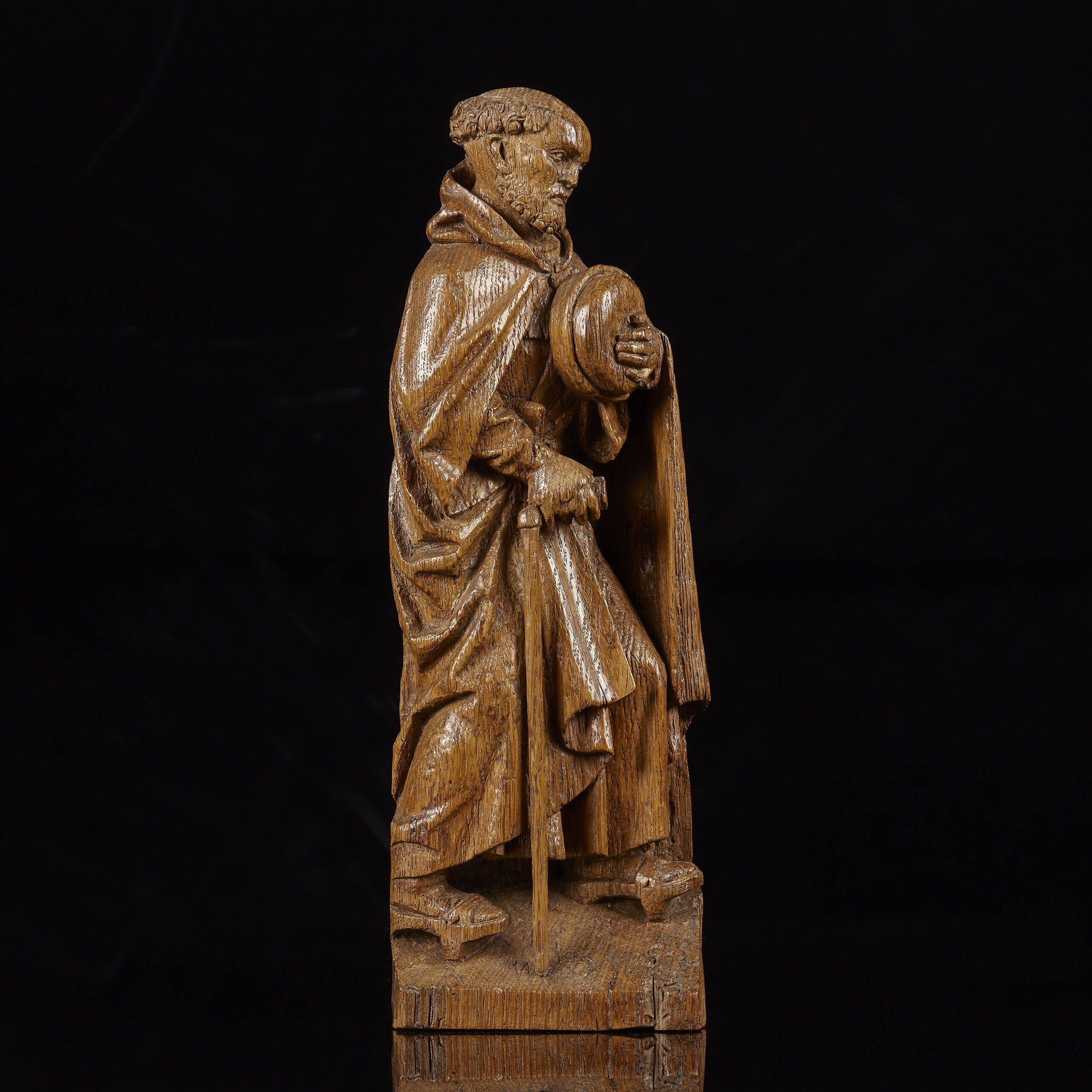Brabant | Brussels
Late Gothic | Last quarter of the 15th Century | Ca. 1480/1500
Oak | Carved in high relief
H. 29,5 cm.
PROVENANCE
With Jan Dirven Works of Art | Antwerp | 1996
Private collection | The Hague
REFERENCE LITERATURE
Gerwen, Ch. & Gerwen, H. (1981). Museum Van Gerwen-Lemmens. Schatkamer van de Kempen. Valkenswaard, p. 28, ill. 9-3;
Steyaert, J.W. (1994). Late Gothic Sculpture. The Burgundian Netherlands. Ghent, p. 156, ill. 27c
CERTIFICATE
With a valuation report by Mr. J. Dirven, Antwerp, dd. 2 April 1996
CATALOGUE NOTE
This retable fragment represents Saint Joseph, the spouse of Mary and the legal father of Christ. In medieval art Joseph is shown as an old men, mostly with a beard, not only in keeping with Jewish custom, but also because – although the Gospel accounts do not give his age – later legends tend to present him as an old man at the time of his wedding to Mary, supporting the belief in Mary’s perpetual virginity. In his report from 1996 on this sculpture Jan Dirven states that the figure comes from a Nativity group. The saint taking off his hat certainly fits within the narrative of an adoration theme. However, a Circumcision, Presentation at Temple or Christ among the Doctors might also fit this representation. Especially since Joseph is clearly depicted as a traveller, with a walking stick and typical medieval patten overshoes. These pattens – derived from the Old French patte meaning ‘hoof’ or ‘paw’ and known in Dutch as ‘trip’ – were worn by both men and women during the Middle Ages outdoors and in public places over thin soled indoor footwear as protection from the outdoor elements. These overshoes and often depicted in art from the 15th century. Well-known examples include The Arnolfini Portrait painted in 1434 by the Early Netherlandish painter Jan van Eyck (collection of the National Gallery, London). The right wing of the Mérode Altarpiece, painted in the 1420s and attributed to Robert Campin and his workshop, also shows St. Joseph is his workshop wearing pattens (collection of The Cloisters, New York).
This fine oak figure was carved in a Brussels workshop in the end of the 15th century. The figure relates to a Saint Joseph figure which is part of a Brussels Circumcision of Christ-group dating to ca. 1470 (Steyaert, 1994, p. 156) and a second Circumcision of Christ-group, that is part of a Brussels retabel, dated ca. 1480, kept in the collection of Het Noordbrabants Museum (inv. nr. 16465; Gerwen, 1981, p. 28). As such an origin in Brussels and a date in the last quarter of the 15th century appears likely.

